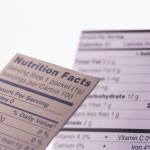 In our last post, we discussed things that robbed your body of essential nutrients. Your body needs specific resources to build and repair itself and the only way you get those resources is through the food you eat, the things you drink and the air you breathe.
In our last post, we discussed things that robbed your body of essential nutrients. Your body needs specific resources to build and repair itself and the only way you get those resources is through the food you eat, the things you drink and the air you breathe.
We discussed what things rob your body of nutrients, but no matter how hard we try some are unavoidable. Let’s discuss what we can do to help repair your body.
Making up the deficit
Even refined food that is free from artificial additives is not neutral. Any food you eat that requires more nutrients for the body to make use of it than the food itself provides is effectively an anti-nutrient. Living on these foods gradually robs the body of vital nutrients. In fact, two-thirds of the calories in the average person’s diet in the US come from these foods. That leaves one-third of the diet to provide, not only enough nutrients for general health, but also enough to make up the deficit of nutrient-deficient food and to combat other anti-nutrients from car pollution to pesticides. Supplements can help make up the deficit in the short term, but the long term solution is to maximize our intake of foods that are high in nutrients (that are nutrient-rich) and minimize foods that are nutrient robbers (or nutrient deficient).
Partial list of anti-nutrient rich foods
| Any ‘fortified’ foods | All deep fried foods | Recreational drugs | All fast foods |
| Chips | Almost anything in a box | Antibiotics & other drugs | Aspirin/painkillers |
| Pop/soda | Candy | Most bakery goods | TV dinners |
| Microwave popcorn | Ice Cream | Cured meats | Tap water (in city) |
| Alcohol | Hot dogs / bologna | Coffee / cappuccino | Tobacco |
| Any products containing white flour or sugar | Most ‘energy’ drinks/bars | Conventionally grown produce | Processed cheese foods |
These anti-nutrient rich foods may be fine to have on very limited occasions – very limited occasions. They absolutely have no place on a regular basis in an athlete’s diet – remember, you need high-performance fuel!
Organics, GMOs
Labeling on food does not tell you everything. Unless you eat only 100% organic foods, most foods contain at least trace amounts of pesticides. In fact, the amount of fruit and vegetables consumed by the average person in a year has the equivalent of up to one gallon of pesticides sprayed on it! Forty percent of pesticides now in use have been proved to be cancer-promoting and linked to birth defects or decreased fertility. Pesticide exposure is associated with depression, memory decline, destabilization of moods and aggressive outbursts, Parkinson’s disease, asthma, eczema, migraines, irritable bowel syndrome and rhinitis (nasal inflammation).
Still not convinced? I am often asked how much of these pesticides are really on conventionally grown foods. The answer is: more than we are led to believe. In 1994, a survey of carrots found that some contained residue levels 25 times higher than the safety limit! In 1995, 10% of lettuces were shown to have levels in excess of the safety limits. The next logical question is ‘how can this be so – if they are above the safety limits someone would do something about it’. The answer is a bit more complex, but it basically comes down to this: unless there is a proven link to a public health risk (like the recent E. coli outbreaks) little is done. Agribusiness is BIG business.
This infusion of pesticides is linked to genetically modified foods (or genetically modified organisms – GMOs). One of the main aims of the genetic engineers is to make plants resistant to particular types of pesticides, the ones that their companies sell. They do this because then the plants can be sprayed with pesticides, all the bugs will die, and the yield will be increased. However, the plants will be contaminated and we, the consumers, pay the price in decreased health. The only way to insure you are not eating GMOs is to eat organic and/or buy from a local farmer that doesn’t use GMO seeds/plants.
